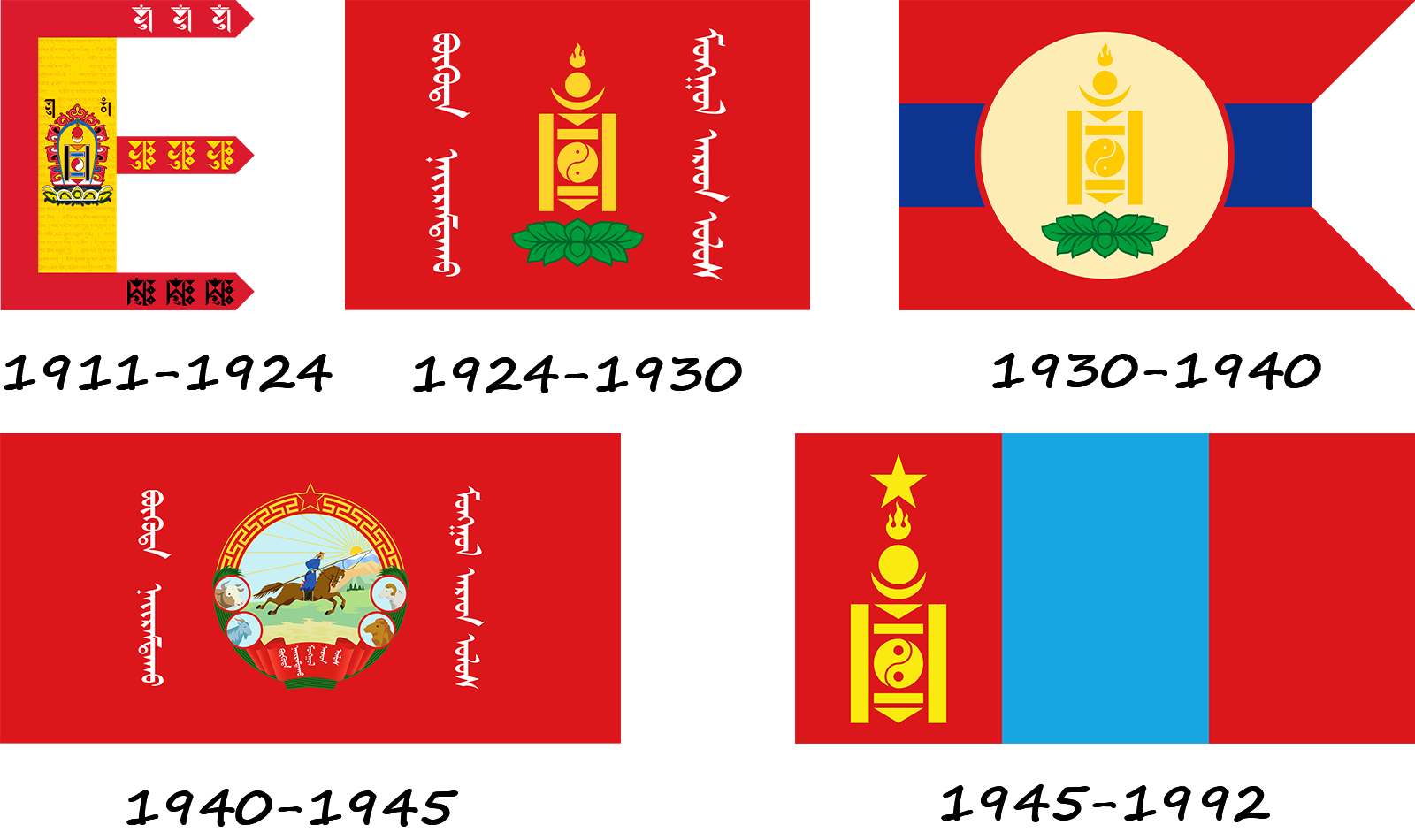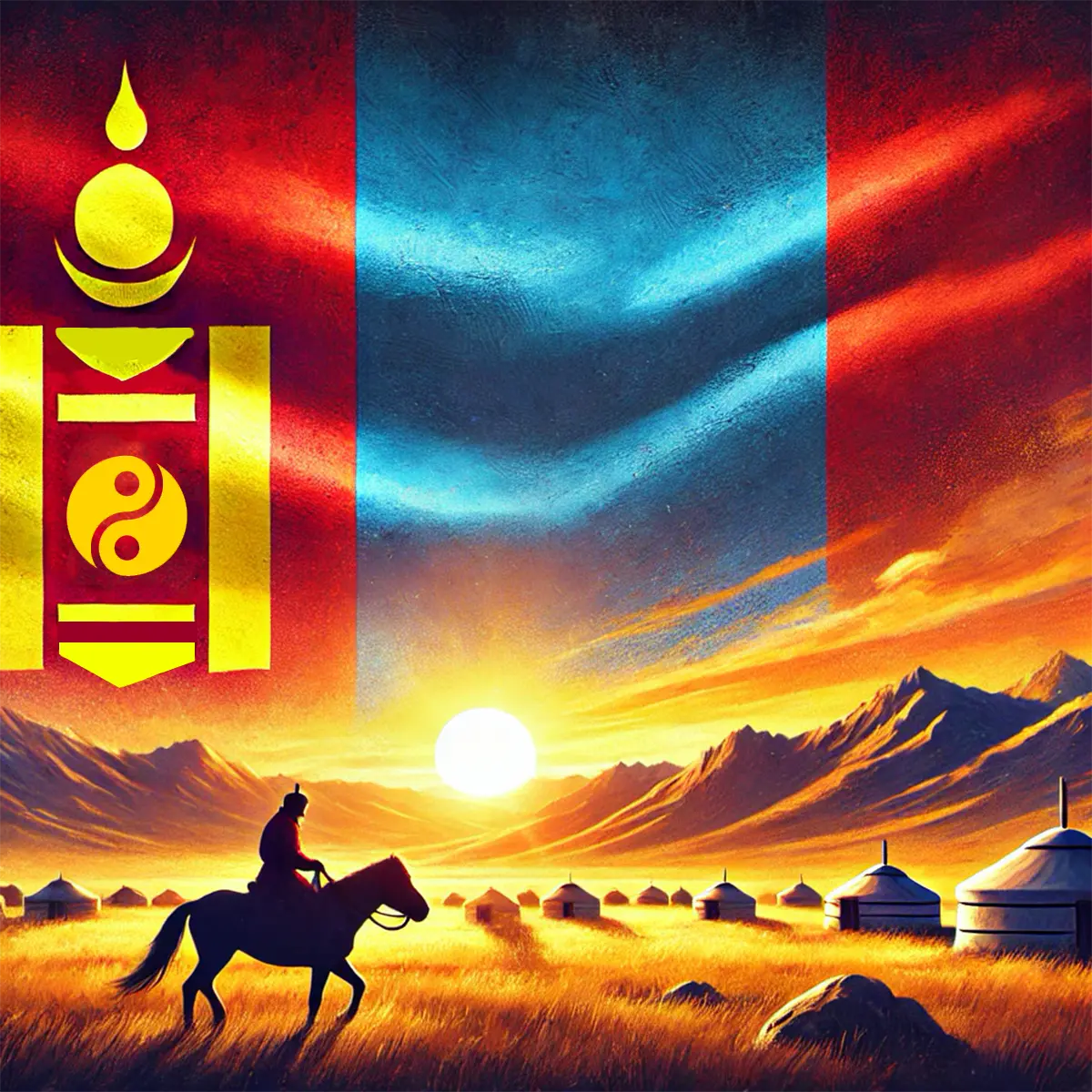Until the 20th century, Mongolia used a flag with religious symbols. However, when the country became independent from China, it introduced flags with traditional symbols, which signified the emergence of a clear identity.
During the time of the Mongolian People's Republic, starting in 1924, the flag underwent significant changes to represent the new socialist government. During this period, the Soyombo symbol appeared, combining national identity with socialist ideals. Therefore, the flag was a red cloth with a golden Soyombo symbol in the center.
Then, from 1930 to 1940, there were three equal horizontal stripes of red, blue, and red with a circle in the center and the golden Soyombo symbol inside the circle.

The flag of 1940-1945 was a red field with the country's coat of arms in the center. Starting in 1945, the familiar flag design appeared: three vertical stripes of red, blue, and red and the Soyombo symbol, which until 1992 still had a communist star above it.

The flag got its final look on July 8, 2011, when the colors of the flag were officially standardized.





